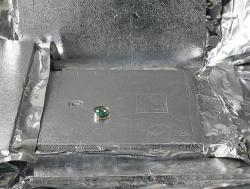Mar 29 2010
A miniature pressure sensor has been developed by research scientists at the Duisburg, Germany-based Fraunhofer Institute for Microelectronic Circuits and Systems IMS.
 Pressure Sensor for Vacuum Insulation Panel
Pressure Sensor for Vacuum Insulation Panel
This sensor is positioned inside a recess in a vacuum insulation panel.
The porous core material created from silicic acid and a tightly sealed shell in the vacuum insulation panel supports the vacuum existing in it. As vacuum happens to be an excellent thermal insulator, the vacuum panels have an insulation value that is 5 to 10 times more as compared to traditional panels, such as panels made from polystyrene material. Heating bills are lower for apartments that incorporate vacuum insulation panels since the insulation material has low thermal conductivity resulting in high energy efficiency.
However, these insulation panels are sensitive. Over a period of time the panel’s airtight film suffers loss of insulating properties and is accompanied by vacuum leaks. According to experts, the gas pressure is 1 millibar per year. In addition, the thin film in the panel is prone to damage during transport. These panels are to be checked for ascertaining if the insulating and vacuum effects are present before they are installed in new apartments. Fraunhofer Institute scientists have developed a pressure sensor microchip that can determine the condition of these panels at any given time.
A transponder is positioned on a board adjacent to this microchip that transmits data measured through the insulator film without using a hard wire connection. On the outer pane wall, a reader is positioned to receive this data and uses another coil to provide energy to the transponder, according to Dr. Hoc Khiem Trieu, IMS’ head of department.
The miniature sensor that measures a mere 20 sq. mm consumes very little energy. The radio signal from the reader powers the sensor through thin layers of metal. The sensor can also measure the vacuum in refrigerators whose functioning requires low thermal conductivity.
This sensor is also utilized in the medical domain, for example, for measuring eye or blood pressure, and has been further developed for construction sector applications. At present, the sensor is in the prototype phase. The research scientists are planning for series production of the sensor within a time frame of one or two years. The sensor will be displayed by the IMS at the trade fair dealing with automatic identification, namely, the Euro ID in Cologne, Germany from May 4 to 6, 2010.